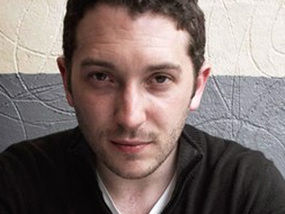
Obsessive compulsive disorder (OCD) is a condition that has recently been given a significant amount of TV airplay and media coverage, perhaps most notably in the Channel 4 documentary Jon Richardson: A little bit OCD, which received mostly good reviews from mental health groups.
Despite this reasonable public profile, our knowledge about the best way to care for people with OCD remains relatively poor. There isn’t much high quality research being published in the field and, as a result, guidance for professionals is thin on the ground. NICE have published a guideline on OCD and BDD (body dysmorphic disorder), but this came out in 2005 and has not been updated since. It’s time for an update and that’s what we have this week with a new 24 page publication from NICE, which brings together the best available evidence that’s been published in the last decade.
Methods

Comedian Jon Richardson helped improve public understanding of OCD through his TV documentary
The ‘evidence update’ has been carried out by a group of topic experts including psychiatrists, psychotherapists, GPs, researchers and information scientists.
They searched a wide range of databases looking for systematic reviews and RCTs on OCD and BDD and limited their results to publications from 30 Oct 2003 (the end of the search period of NICE clinical guideline 31) to 2 April 2013.
They found 1,247 unique references from this literature search and whittled that long-list down to 16 papers to include in their final report (4 reviews and 12 trials), all of which are included in the links section at the end of this blog.
Key points
Initial treatment options – adults
- Telemental health and technology interventions for OCD such as computerised cognitive behavioural therapy (CBT) or telephone CBT may have promise but current evidence is limited.
- Acceptance and commitment therapy may improve symptoms of OCD to a greater extent than progressive relaxation training.
Initial treatment options for adults – selective serotonin reuptake inhibitors (SSRIs) or group CBT
- Sertraline or group CBT may result in similar response rates, but more people may have clinical remission with group CBT than with sertraline.
Initial treatment options – children and young people
- Family-based CBT may be associated with higher rates of response to treatment than psychoeducation plus relaxation training.
- Family-based CBT may be associated with long-term benefits, for example no longer meeting the criteria for diagnosis of OCD.
Choice of drug treatment in adults
- Paroxetine may be effective in people whose OCD symptoms do not respond to venlafaxine. Venlafaxine may not be as effective in people whose symptoms have not responded to paroxetine. (Note: Venlafaxine is not recommended by current guidance and at the time of publication of this Evidence Update did not have UK marketing authorisation for this indication.)

Many of the drugs listed in this report are not currently approved for use in UK patients with OCD
- Continuing treatment with SSRIs after initial response may be associated with lower rates of relapse than placebo.
Poor response to initial treatment in adults
- Evidence for antipsychotics added to SSRIs for people whose OCD symptoms have not responded to antidepressants alone is inconclusive. Risperidone and aripiprazole seem to have an effect on symptoms of OCD when added to antidepressants, but quetiapine and olanzapine may have no add-on effects. However, antipsychotics may be associated with increased rates of adverse events. (At the time of publication of this Evidence Update, aripiprazole, olanzapine, quetiapine and risperidone did not have UK marketing authorisation for this indication. Informed consent should be obtained and documented.)
- Acetylcysteine plus SSRIs may result in improvement of symptoms of OCD compared with SSRIs plus placebo. (Acetylcysteine is not recommended by current guidance and at the time of publication of this Evidence Update did not have UK marketing authorisation for this indication.)
- The anticonvulsant drugs lamotrigine and topiramate may result in improved OCD symptoms as add-on therapy to SSRIs compared with SSRIs plus placebo, but further research is needed. Topiramate may be associated with increased adverse events. (Lamotrigine and topiramate are not recommended by current guidance and at the time of publication of this Evidence Update did not have UK marketing authorisation for this indication.)
Poor response to initial treatment in children and young people
- CBT plus drug treatment with SSRIs may result in better outcomes on persistent symptoms of OCD in children than either drug treatment plus low-intensity CBT, or drug treatment alone.
Transcranial magnetic stimulation
- Transcranial magnetic stimulation may not be an effective treatment for people with OCD.
None of the new research found changes the core recommendations from the 2005 NICE guidance.
Uncertainties
The update has identified one treatment uncertainty that has been captured in the DUETs database:
Links
Obsessive compulsive disorder (PDF). NICE evidence update 47, Sep 2013.
Obsessive-compulsive disorder: core interventions in the treatment of obsessive-compulsive disorder and body dysmorphic disorder (PDF). NICE clinical guideline 31, 2005.
Obsessive-compulsive disorder and body dysmorphic disorder. NICE Pathway.
Afshar H, Roohafza H, Mohammad-Beigi H et al. (2012) N-acetylcysteine add-on treatment in refractory obsessive-compulsive disorder: a randomized, double-blind, placebo-controlled trial. Journal of Clinical Psychopharmacology 32: 797–803
Barrett P, Healy-Farrell L, March JS (2004) Cognitive-behavioral family treatment of childhood obsessive-compulsive disorder: a controlled trial. Journal of the American Academy of Child & Adolescent Psychiatry 43: 46–62
Berlin HA, Koran LM, Jenike MA et al. (2011) Double-blind, placebo-controlled trial of topiramate augmentation in treatment-resistant obsessive-compulsive disorder. Journal of Clinical Psychiatry 72: 716–21
Bolton D, Williams T, Perrin S et al. (2011) Randomized controlled trial of full and brief cognitive- behaviour therapy and wait-list for paediatric obsessive-compulsive disorder. Journal of Child Psychology and Psychiatry 52: 1269–78
Bruno A, Micò U, Pandolfo G et al. (2012) Lamotrigine augmentation of serotonin reuptake inhibitors in treatment-resistant obsessive-compulsive disorder: a double-blind, placebo-controlled study. Journal of Psychopharmacology 26: 1456–62
Denys D, van Megen HJ, van der Wee N et al. (2004) A double-blind switch study of paroxetine and venlafaxine in obsessive-compulsive disorder. Journal of Clinical Psychiatry 65: 37–43
Fineberg NA, Tonnoir B, Lemming O et al. (2007) Escitalopram prevents relapse of obsessive- compulsive disorder. European Neuropsychopharmacology 17: 430–9
Franklin ME, Sapyta J, Freeman JB et al. (2011) Cognitive behavior therapy augmentation of pharmacotherapy in pediatric obsessive-compulsive disorder: the pediatric OCD treatment study II (POTS II) randomized controlled trial. JAMA 306: 1224–32
Herbst N, Voderholzer U, Stelzer N et al. (2012) The potential of telemental health applications for obsessive-compulsive disorder. Clinical Psychology Review 32: 454–66
Komossa K, Depping AM, Meyer M et al. (2010) Second-generation antipsychotics for obsessive- compulsive disorder. Cochrane Database of Systematic Reviews issue 12: CD008141
Lovell K, Bee P (2011) Optimising treatment resources for OCD: a review of the evidence base for technology-enhanced delivery. Journal of Mental Health 20: 525–42
O’Leary EM, Barrett P, Fjermestad KW (2009) Cognitive behavioural family treatment for childhood obsessive-compulsive disorder: a 7-year follow-up study. Journal of Anxiety Disorders 23: 973–8
Piacentini J, Bergman RL, Chang S et al. (2011) Controlled comparison of family cognitive behavioural therapy and psychoeducation/relaxation training for childhood obsessive-compulsive disorder. Journal of the American Academy of Child and Adolescent Psychiatry 50: 1149–61
Sayyah M, Sayyah M, Boostani H et al. (2012) Effects of aripiprazole augmentation in treatment- resistant obsessive-compulsive disorder (a double blind clinical trial). Depression and Anxiety 29: 850–4
Slotema CW, Blom JD, Hoek HW et al. (2010) Should we expand the toolbox of psychiatric treatment methods to include repetitive transcranial magnetic stimulation (rTMS): a meta-analysis of the efficacy of rTMS in psychiatric disorders. Journal of Clinical Psychiatry 71: 873–84
Sousa MB, Isolan LR, Oliveira RR et al. (2006) A randomized clinical trial of cognitive-behavioral group therapy and sertraline in the treatment of obsessive-compulsive disorder. Journal of Clinical Psychiatry 67: 1133–9
Twohig MP, Hayes SC, Plumb JC et al. (2010) A randomized clinical trial of acceptance and commitment therapy vs. progressive relaxation training for obsessive compulsive disorder. Journal of Consulting and Clinical Psychology 78: 705–16

@Mental_Elf May, might. inconclusive but lets dispense a truckload of brain damaging drugs despite the fact we have no idea what we’re doing
Latest evidence from NICE on Obsessive Compulsive Disorder (OCD) and Body Dysmorphic Disorder (BDD): Obsessive… http://t.co/RV7bno9X7w
@Mental_Elf any “treatment” that involves more button-pressing habit-type actions feels contrary to relaxed mind-set needed to live with ocd
@NICEcomms highlight 4 systematic reviews and 12 RCTs on OCD http://t.co/rNBq9ZKfmw
Latest evidence from NICE on Obsessive Compulsive Disorder (OCD) and Body Dysmorphic Disorder… http://t.co/sF0BAgnfAD
@NICEcomms have published an evidence update on Obsessive Compulsive Disorder (OCD) & Body Dysmorphic Disorder (BDD) http://t.co/rNBq9ZKfmw
Computerised CBT shows promise for OCD, but evidence is limited: http://t.co/rNBq9ZKfmw
@Mental_Elf whatever happened to the therapeutic relationship and its central role in bringing about change?
@PusiGalor @Mental_Elf in my view/experience the relationship is everything and the method largely irrelevant – it just adds structure.
@Mental_Elf total non-sense. Computers are not nearly powerful enough to help in metal health. We’d be better training CBT dogs – seriously.
Acceptance and commitment therapy may improve OCD symptoms more than progressive relaxation training http://t.co/rNBq9ZKfmw
More people with OCD may have clinical remission with group CBT than with the SSRI sertraline: http://t.co/rNBq9ZKfmw
Childhood OCD: Family-based CBT may have better treatment response than psychoeducation plus relaxation training: http://t.co/rNBq9ZKfmw
Childhood OCD: Family-based CBT may have long-term benefits, like no longer meeting the criteria for diagnosis: http://t.co/rNBq9ZKfmw
Paroxetine may be effective in people whose OCD symptoms do not respond to venlafaxine: http://t.co/rNBq9ZKfmw
Venlafaxine may not be as effective in people whose OCD symptoms have not responded to paroxetine: http://t.co/rNBq9ZKfmw
Inconclusive evidence for antipsychotics added to SSRIs for ppl whose OCD has not responded to antidepressants alone: http://t.co/rNBq9ZKfmw
RT @Mental_Elf: Acetylcysteine plus SSRIs may result in improvement of symptoms of OCD compared with SSRIs plus placebo: http://t.co/rNBq9Z…
The anticonvulsant drugs lamotrigine and topiramate may result in improved OCD symptoms as add-on therapy to SSRIs: http://t.co/rNBq9ZKfmw
CBT plus drug treatment with SSRIs may result in better outcomes on persistent symptoms of OCD in children: http://t.co/rNBq9ZKfmw
Don’t miss the latest evidence from NICE on Obsessive Compulsive Disorder (OCD) and Body Dysmorphic Disorder (BDD) http://t.co/rNBq9ZKfmw
Latest evidence from NICE on OCD. http://t.co/6VIBxNFqDa Seems to amount to ‘We have very little idea how to help.’
Latest evidence from NICE on Obsessive Compulsive Disorder (OCD) and Body Dysmorphic Disorder (BDD) http://t.co/casrgZAqp6 via @sharethis
Mental Elf: Latest evidence from NICE on Obsessive Compulsive Disorder (OCD) and Body Dysmorphic Disorder (BDD) http://t.co/CWCNWORv6F
Latest evidence from NICE on Obsessive Compulsive Disorder (OCD) and Body Dysmorphic Disorder (BDD) http://t.co/xQfBwnIthN from @Mental_Elf